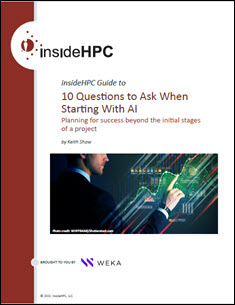The Texas Advanced Computer Center (TACC) has welcomed its Frontera Computational Science Fellowship awardees for 2022-2023. The program provides a year-long opportunity for talented graduate students to compute on the Frontera supercomputer world and collaborate with experts at TACC.
TACC released the following profiles and Q&A with the new cohort of fellows:
Alma Carolina Escobosa, a chemical engineering Ph.D candidate at New Mexico State University
Why did you become a scientist?
I have always been curious about how the world around me works. As a sophomore at The University of Texas at El Paso, I experienced first-hand the uncertainties of research. Seeing experimental results and characterizations that didn’t make sense inspired me to explore different solutions. After a year of being an undergraduate researcher, I knew I wanted to pursue a PhD to become a scientist.
What is your favorite aspect of your research?
My research focuses on developing forcefields for adsorbent materials — it’s fulfilling to know that experimental scientists can use our results and methods to their advantage in the laboratory. Being able to perform computational experiments without wasting precious resources in a lab is a gratifying feeling.
What excites you most about the opportunity to work on the Frontera supercomputer?
I’m excited to see how Frontera’s computer power is being used by others. I’m also excited to further my research goals in the development of polarizable flexible forcefields for metal-organic frameworks (MOFs).
What do you hope to accomplish during your time as a Frontera Fellow?
Even with the advances in computing resources, generalized polarizable flexible forcefields remain a challenge in the current literature. I hope to develop forcefields for 300 MOFs. I’d also like to collaborate and get feedback from researchers studying in similar fields.
Rebecca Vandewalle, a Geography and Geographic Information Science Ph.D student at the University of Illinois Urbana-Champaign
Why did you become a scientist?
I have always been interested in learning about how human behavior shapes the physical and social landscape. This led me to study archaeology, where I worked on inferring human patterns and processes from material remains. I realized that I needed to learn more about surveying instruments and computer programming to collect, store, and report archeological data. This developed into a strong interest in geospatial centric research into human behaviors, especially at large scales.
What is your favorite aspect of your research?
I love the interdisciplinary and varied nature of geographic work. My research centers on simulation and modeling, which requires intense collaboration between researchers working on domain science, communication, qualitative research, IT, and computing. As so many societal challenges have an inherently spatial aspect, I’m never without important work to do.
What excites you most about the opportunity to work on the Frontera supercomputer?
I’m excited to address larger study areas and more complex interactions than I’m able to do with my current set of computing resources. I’m also thrilled to meet other people working intensely in high performance computing. I hope to learn new computing techniques and potentially collaborate with researchers from other fields.
What do you hope to accomplish during your time as a Frontera Fellow?
I want to scale my existing models and be able to better integrate aspects that are needed on such a large system, such as parallel input-output and parallel data visualization. I also want to network with other high performance computing researchers and gain a better idea of how to support my research after graduation.
Shiwei Zhou, a a Ph.D candidate in Applied Physics at the University of Texas at Arlington
Why did you become a scientist?
I have always been curious about the fundamental laws of the universe, which is why I studied physics. Throughout my studies, I realized how important it was to use these laws to solve the practical problems in medical imaging. I want to become a medical physicist and help as many people as possible.
What is your favorite aspect of your research?
My area is medical physics, particularly in computed tomography (CT) and single-photon emission computed tomography (SPECT) image reconstruction and enhancement. Factors like photon attenuation, noise, and organ or patient motion can introduce artifacts in the reconstructed images and potentially cause a misdiagnosis. I’m developing novel algorithms to model these factors and improve image quality while using less radiation than regularly used in clinics. This could lead not only to better diagnoses, but also lower radiation harm to millions of patients.
What excites you most about the opportunity to work on the Frontera supercomputer?
As algorithms become more complex when modeling degrading factors in the imaging process, it takes a large amount of computational power to do realistic simulations and reconstruct artifact-free images. Thanks to Frontera, these advanced algorithms could be developed and tested for future adaption in clinics.
What do you hope to accomplish during your time as a Frontera Fellow?
I’ll be conducting a large-scale study of simulation and reconstruction for dual-gated SPECT scans and developing a practical method to transfer attenuation maps from CT for SPECT. The results will demonstrate how, and under which conditions, advanced reconstruction algorithms could be beneficial to parallel tools, such as OpenMP/MPI and become a practical tool for clinical adaption.
What do you like to do when you aren’t working on research?
I’ve lived in the Dallas-Fort Worth area for four years and love trying new restaurants. So far, my favorite types of food are Sichuan, Thai, and BBQ. I also enjoy visiting zoos and aquariums.
Ricardo Yarza, a Ph. D candidate in Astronomy and Astrophysics at the University of California, Santa Cruz
Why did you become a scientist?
I grew up in an environment where pathways to science were scarce. I hadn’t considered becoming a scientist before my freshman year of college, where I was fortunate to meet peers and mentors who shared their passion for physics and showed me that I could pursue it as a career. At the end of freshman year, I changed my major from Mechanical Engineering to Physics. I knew I wanted to be a scientist during my first research project, when I experienced the joy of understanding something new about the universe for the first time.
What is your favorite aspect of your research?
I study planetary engulfment, a process in which a large star consumes one of its planets. One of my favorite aspects of this research is that it’s multidisciplinary. To understand planetary engulfment, you must also understand hydrodynamics, orbital dynamics, and stellar and planetary structure and evolution. I get to interact with a diverse network of collaborators and mentors.
What excites you most about the opportunity to work on the Frontera supercomputer?
The performance improvements brought by graphics processing units (GPUs) have revolutionized scientific computing. I am excited about using the hundreds of GPUs in Frontera to perform hydrodynamical simulations of our scientific problems with unprecedented resolution.
What do you hope to accomplish during your time as a Frontera Fellow?
I want to understand planetary engulfment and how it shapes the fate of planetary systems. I hope that my work as a Fellow, in collaboration with academic and industry experts, will bring us closer to this goal. We will create a GPU hydrodynamics code useful to the community at large, and gain insight on the general problem of interactions between giant stars and comparatively compact companions.
Pratik Gandhi, a Ph.D candidate in Astrophysics at the University of California, Davis
Why did you become a scientist?
In high school, I realized that I enjoy thinking about how the universe works and trying to figure out the underlying processes and laws. It wasn’t until my sophomore year in college that I realized doing research in astronomy and astrophysics was a potential career path, and once I got involved in research, I was hooked.
What is your favorite aspect of your research?
My work focuses on galaxy evolution. To study how the earliest galaxies evolved into their present-day counterparts, I combine ideas from galaxy theory, stellar evolution models, cosmic reionization, and the growth of dark matter halos. Building complex simulations of galaxies using supercomputers makes me feel like I’m creating miniature universes at my desk.
What excites you most about the opportunity to work on the Frontera supercomputer?
Having access to a resource like Frontera is a privilege. I’m grateful to have the chance to rely on the supercomputer to further my research. Never did I imagine that I would work on supercomputers as part of my job.
What do you hope to accomplish during your time as a Frontera Fellow?
My familiarity with high performance computing is limited to astronomy applications and my specific research. Through interactions with mentors and other Fellows, I want to see how high performance computing is leveraged in other research disciplines and acquire new techniques to make my coding more efficient.
source: TACC



